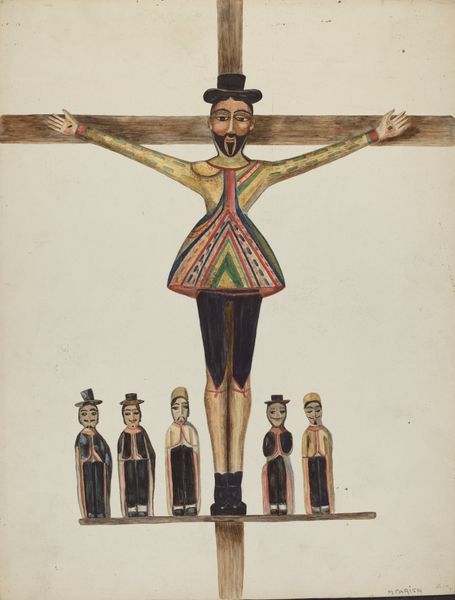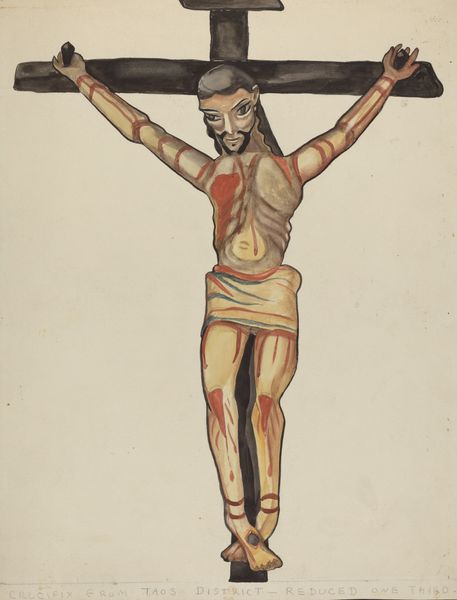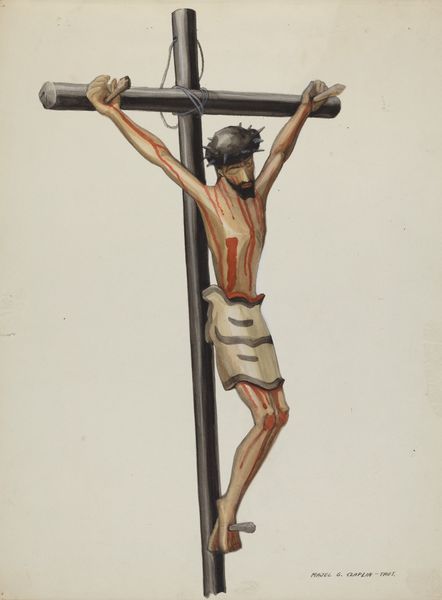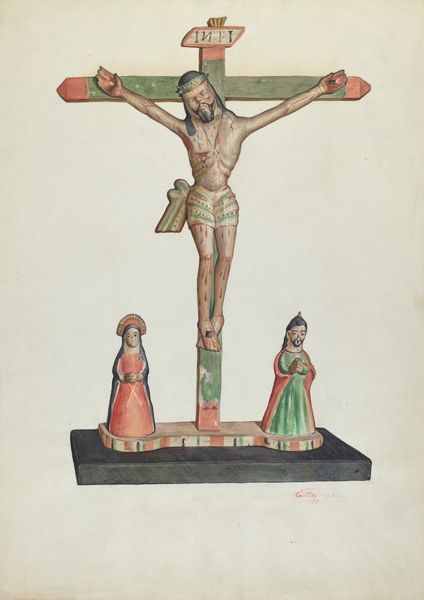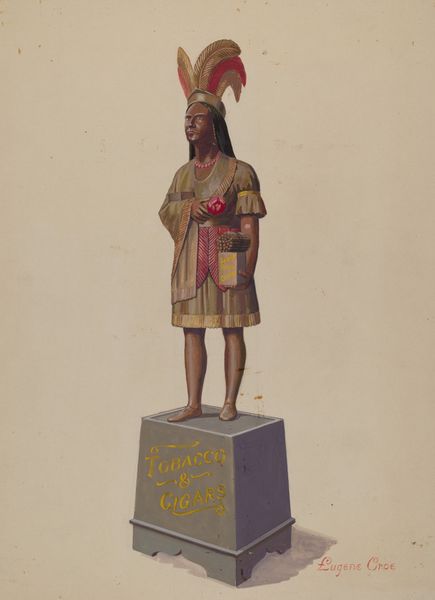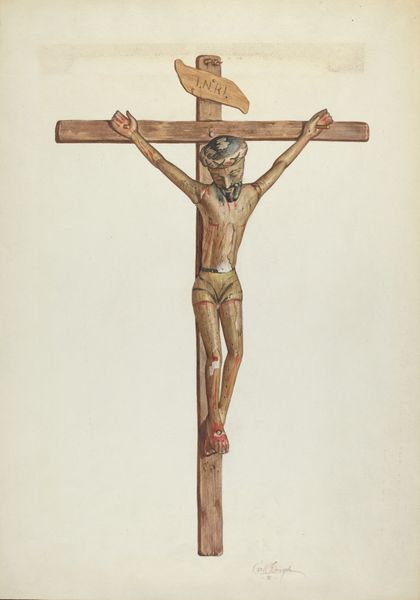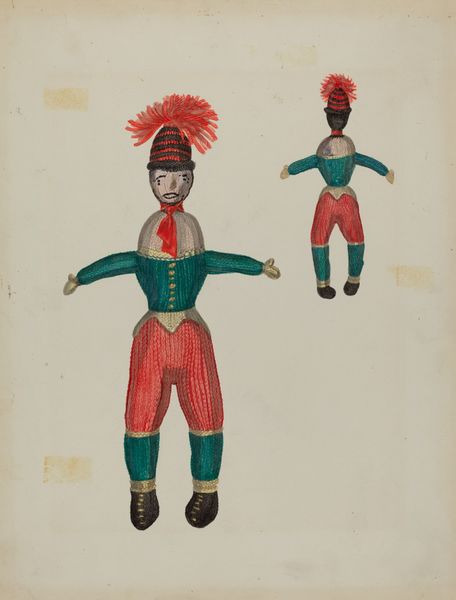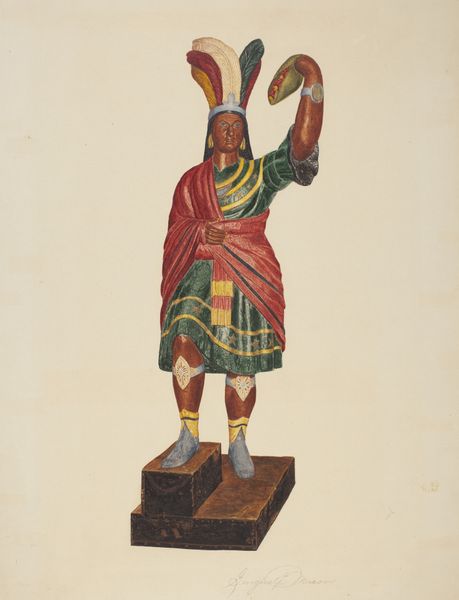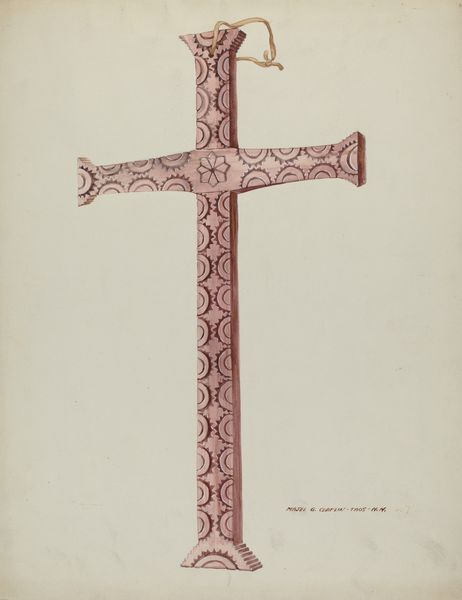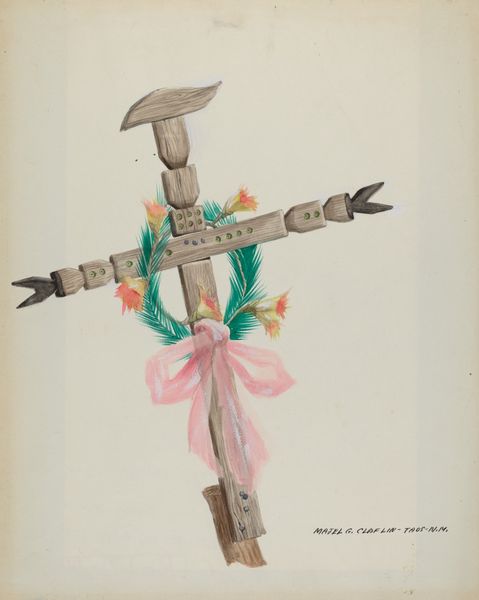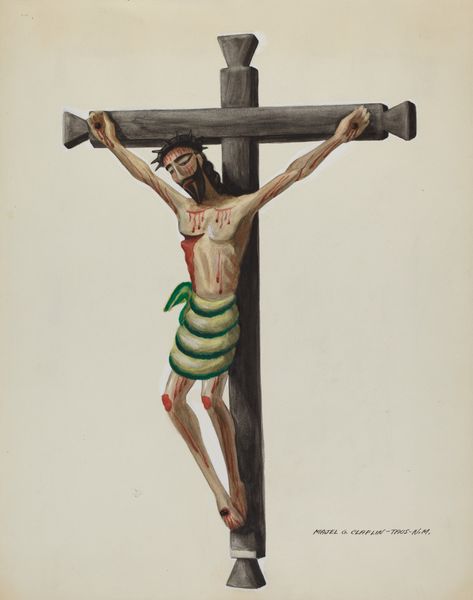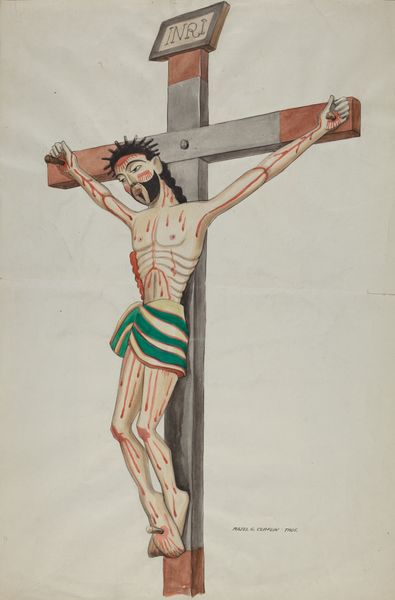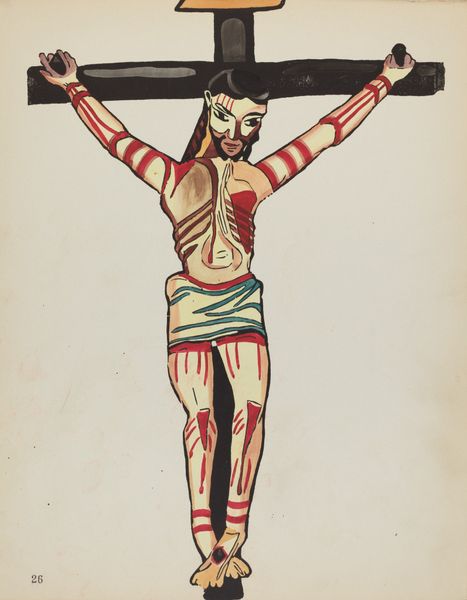
Plate 29: Saint Acacius: From Portfolio "Spanish Colonial Designs of New Mexico" 1935 - 1942
0:00
0:00
drawing, acrylic-paint
#
drawing
#
caricature
#
caricature
#
acrylic-paint
#
figuration
#
folk-art
Dimensions: overall: 35.6 x 28 cm (14 x 11 in.)
Copyright: National Gallery of Art: CC0 1.0
Curator: This drawing, entitled "Plate 29: Saint Acacius: From Portfolio 'Spanish Colonial Designs of New Mexico'", dates from between 1935 and 1942 and is presented here as part of a portfolio, and executed in acrylic paint. Editor: Immediately, I'm struck by how this piece subverts traditional religious iconography. The palette feels more folk art than high religious art, creating an oddly charming, even slightly irreverent mood. Curator: Note how the drawing depicts the Crucifixion not as a solemn scene but rather as an opportunity to showcase vernacular design. Observe, for instance, the bold patterning on Saint Acacius’ vestments; one cannot ignore the indigenous design vocabulary applied liberally across the subject's garment, which invites us to reconsider labor traditions from a range of global contexts. Editor: Exactly! And this is where it gets fascinating. The inclusion of these stylized figures at the base disrupts the expected power dynamics. Are they mourners? Witnesses? Or perhaps a symbolic representation of the colonized population looking up at this figure imposed on them? This juxtaposition raises crucial questions about the intersection of faith, power, and identity within the Spanish Colonial context of New Mexico. Curator: I appreciate how you are situating the figures into your reading, particularly within the specific geo-temporal bounds here; although these sorts of works may be thought of in the cultural imagination as "craft", the production and materials should rightly be viewed within a highly rigorous artistic canon that can hold its own when juxtaposed to work of "high" art historical repute. Editor: That's it precisely, thinking more deeply about the context is vital for our viewing audience: the seemingly simple style shouldn't lead to us ignoring the artwork’s layered commentary on cultural exchange, assimilation, and the enduring legacies of colonialism. It provides insight into how complex historical narratives were understood and visualized by local artists during the period. Curator: This drawing challenges our preconceptions about cultural artistic worth, doesn't it? By acknowledging its means of creation and display, we honor those typically underrepresented labor streams that made pieces such as this "Spanish Colonial Design" come into existence. Editor: Agreed, looking at “Plate 29” today, it serves as a vital reminder that art is never created in a vacuum, it holds narratives around identity, labor, and the ever-evolving dynamics of power and representation.
Comments
No comments
Be the first to comment and join the conversation on the ultimate creative platform.

